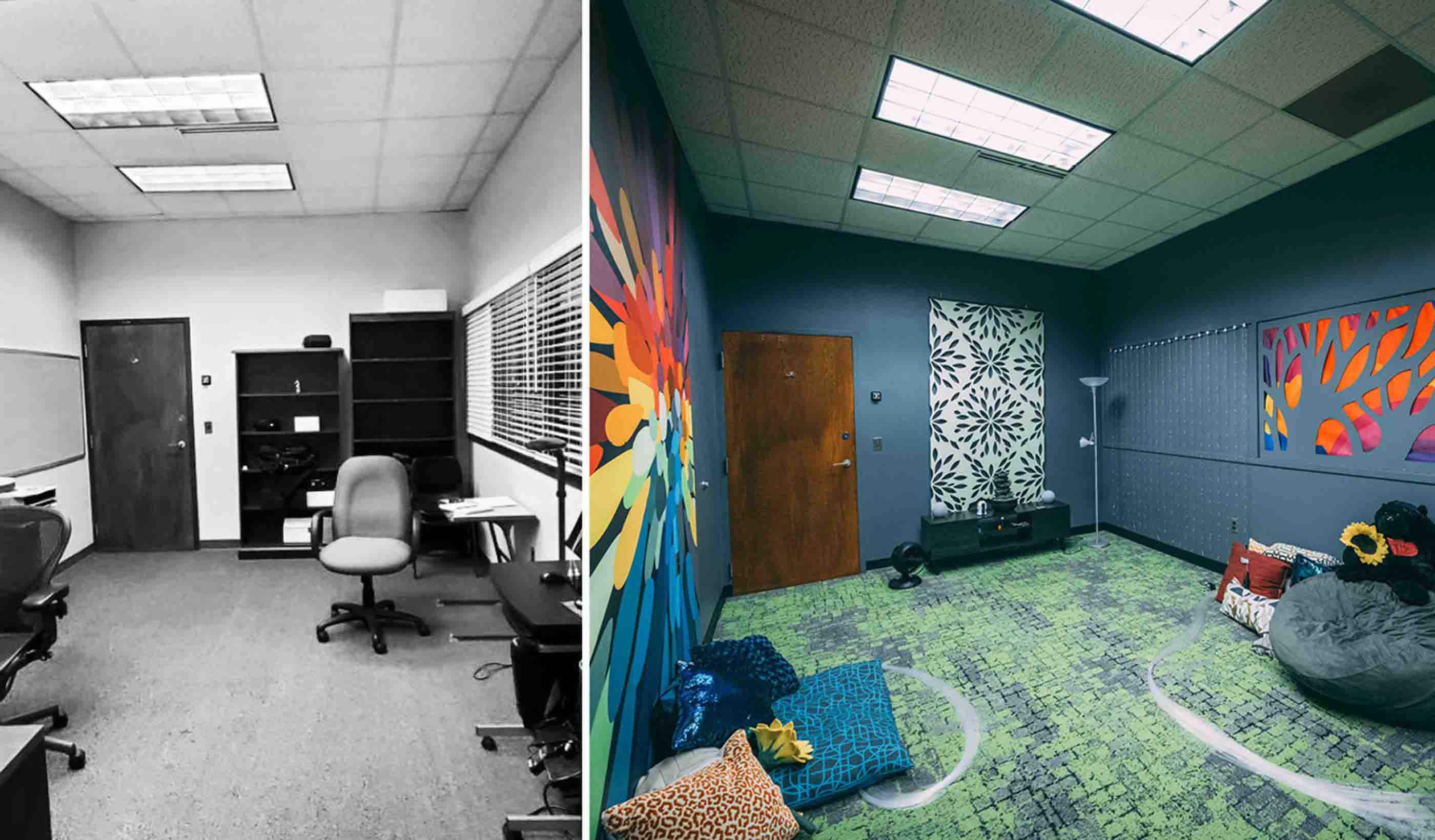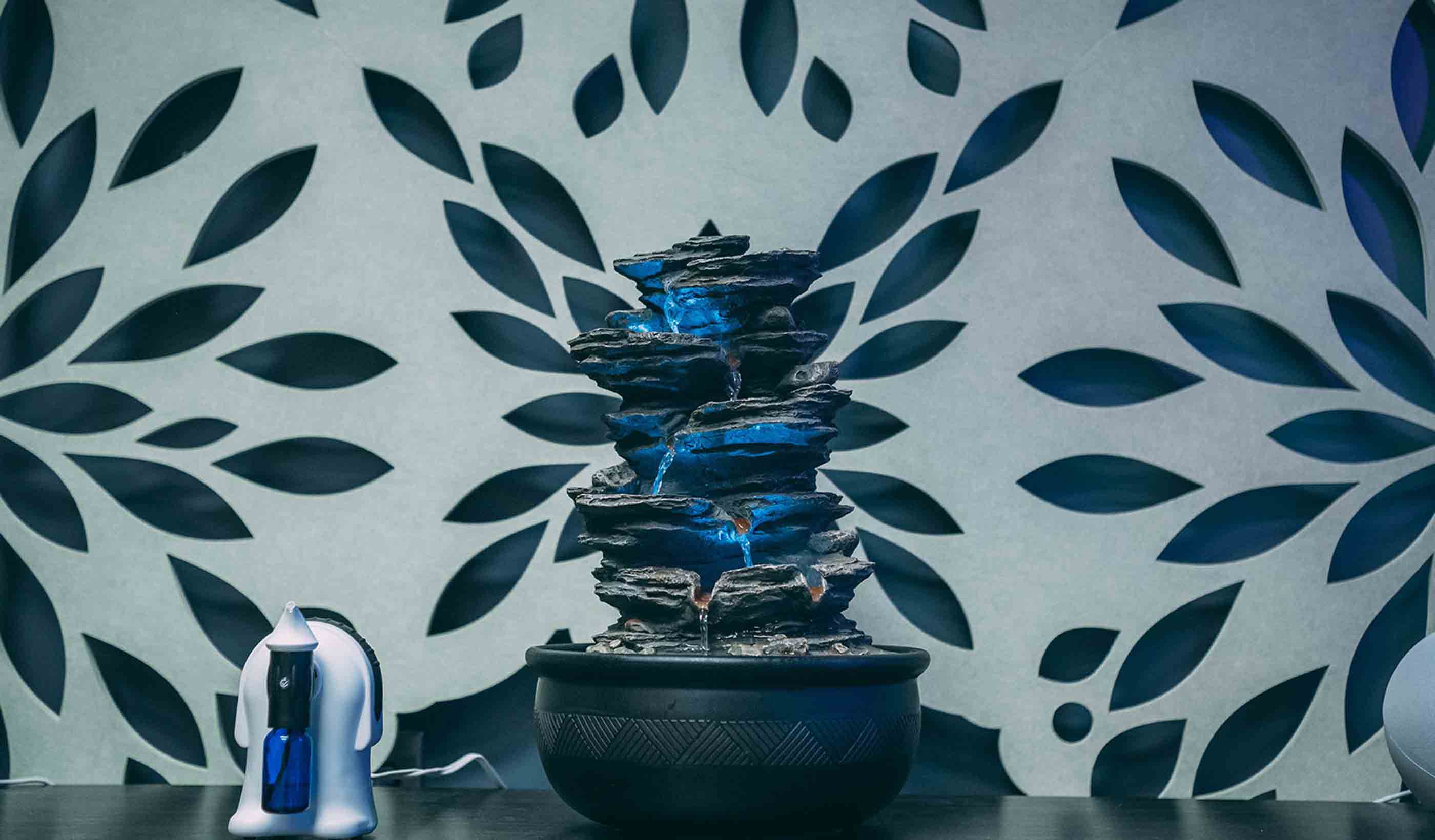[With Video] Can multisensory spaces help reduce anxiety, stress in university students?
September 12, 2024
September 12, 2024
Research shows that multisensory environments help promote positive emotions, facilitate relaxation, and foster a sense of control
A version of this blog first appeared as “Reducing anxiety in college students” in R+B Issue 04.
The kids are not alright.
Like many young people, students in higher education are stressed and anxious in a post-pandemic world.
According to one Boston University study, they are more stressed and anxious than ever before. More than half of the students in the study screened positive for depression or anxiety. Managing an academic workload under such circumstances can be difficult.
Colleges and universities are exploring ways to support students’ mental health. One approach involves the provision of multisensory environments. These are spaces designed to stimulate or soothe an individual’s senses to promote positive emotions, aid relaxation, and foster a sense of control and choice.
Multisensory spaces promote positive emotions and relaxation. They help create a sense of control. Stantec and UNC Greensboro studied how these spaces can reduce stress and improve students’ lives.
The challenge is creating learning spaces that meet the needs of diverse populations and understanding that there is no single approach to designing these spaces.
When creating environments to support learning for populations with neurodiversity, we aim to create dynamic and flexible spaces that support the needs of the individual. We draw upon our experience to create psychologically safe and supportive environments. In those spaces, there are various levels of engagement in group and individual settings. We know that furniture arrangements; spatial layouts; organization; and limiting visual clutter, color, texture, acoustics, and light all play a delicate balance in creating a harmonious space that fosters an ideal place to learn.
Could multisensory environments provide stress relief for college students?
We wanted to know how multisensory spaces impact students. To find out, we partnered with Amanda Gale and Lisa Williams. Gale is a professor of the Department of Interior Architecture at the University of North Carolina – Greensboro (UNC Greensboro) and Williams is a graduate student in that program. We studied the following questions about multisensory rooms for college students:
To find out, we started with an old, empty office.

Our team converted a dormant office storage room into a vibrant multisensory space for neurodiverse students at the University of North Carolina – Greensboro. At left is the room before; at right is the room converted for the research.
The 267-square-foot (25-square-metre) room is on the ground floor of a building on the UNC Greensboro campus. While we had a minimal budget for renovations, we were able to install:
When the room was ready, we invited 49 students to use the space. We asked them to take a short survey before and after visiting the room for 30 minutes.
We used the Perceived Stress Scale and Perceived Restorativeness Scale, along with seven open-ended questions, to measure stress and the restorative effects of the room. The Perceived Stress Scale asks participants to describe how often certain problems such as trouble relaxing or feeling nervous, anxious, or on edge bothered them on a four-point scale from “not at all” to “nearly every day.” The Perceived Restorativeness Scale asks participants to indicate the extent to which a series of statements describes their experience in the room. They range from “being here is an escape experience” and “this place is boring” to “the setting is fascinating.”
Giving participants control over their environment aids in self-regulation.
We also asked the participants to list which elements in the space helped them feel less stressed and what, if anything, they would like to see added to the space.
Of the 49 participants, most identified as female (87.1 percent) and between the ages of 18 and 22 (90.3 percent). They spent an average of about 28 minutes in the room.
Most participants indicated their levels of perceived stress decreased, with an average reduction of 3.62 points out of 40 on the Perceived Stress Scale. The average restorative score was 4.5 out of 6. In other words, most participants felt stressed before entering the room, but for the majority, their stress decreased after spending time there. Most found the space to be restorative.
Giving participants control over their environment aids in self-regulation. The room provided full-spectrum lighting with control of light color across the Kelvin range of the light spectrum as well as power intensity with dimming features.
In the survey, students told us that they liked the adjustable lighting and sound elements. They especially enjoyed the ability to select and control music individually. Being able to individualize and personalize the space gave participants a comforting sense of control over their environment.

To offer a customizable multisensory environment, UNC Greensboro’s space was complemented by various sensory elements, including a water feature, a diffuser for essential oils, and a Bluetooth speaker for students to connect their devices.
When we asked students what they would have liked to have had in the space, some mentioned “things to do,” meaning something to play with or fidget with. This response correlated with participants who preferred active strategies for coping with stress.
However, most elements within the room were intended for more passive engagement. Some students also preferred to recline or lie down rather than merely sit.
Despite the small scope and budget of this renovation, the results were positive. With proper planning and implementation as a part of a renovation or new construction project, a multisensory environment promises to be one successful tactic for reducing student stress and anxiety.
As we strive to increase voice and choice through sensory environments and architecture, we plan to use the best practices from the fields of trauma-informed design and sensory-sensitive research. Sensory room design deserves more research and attention.